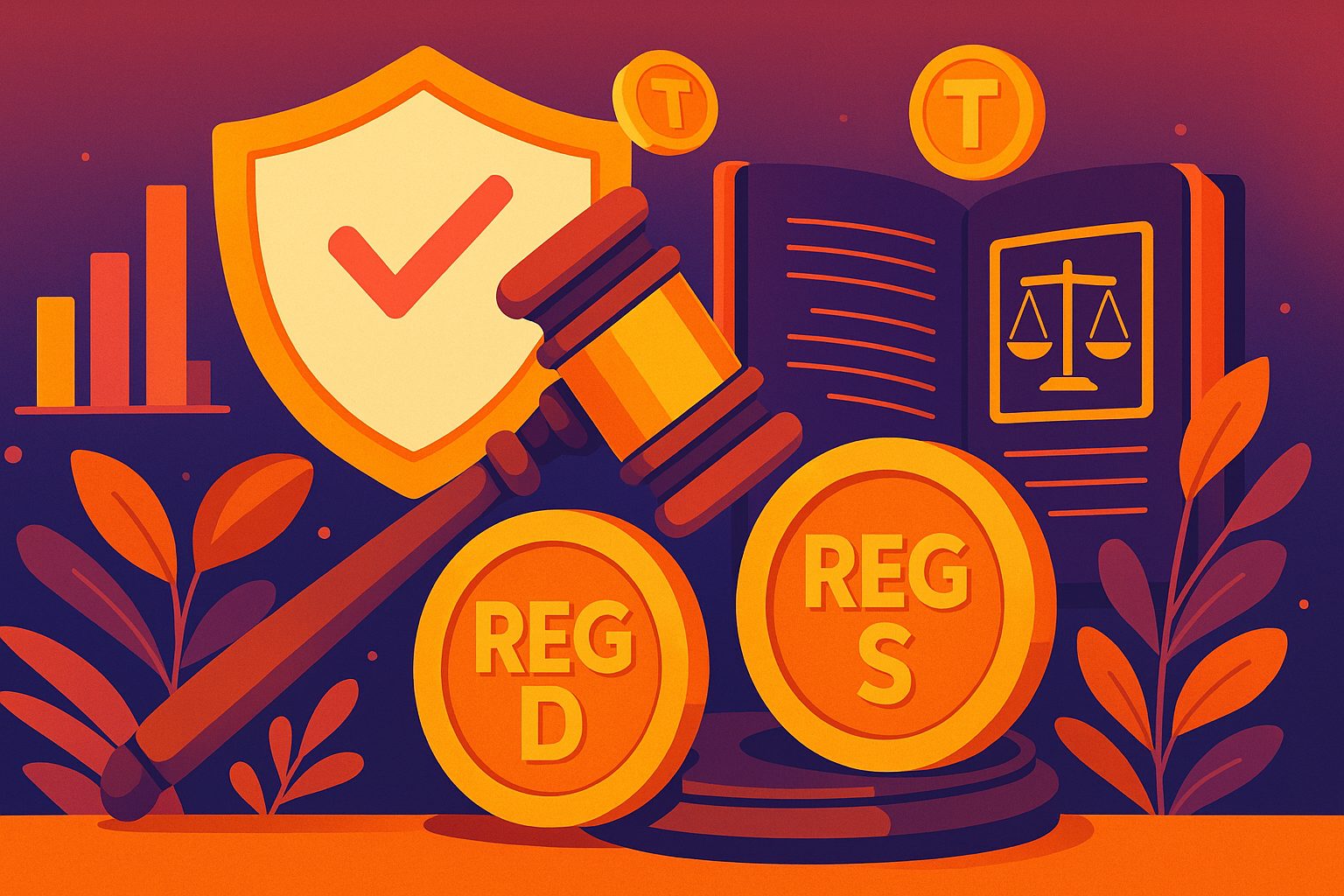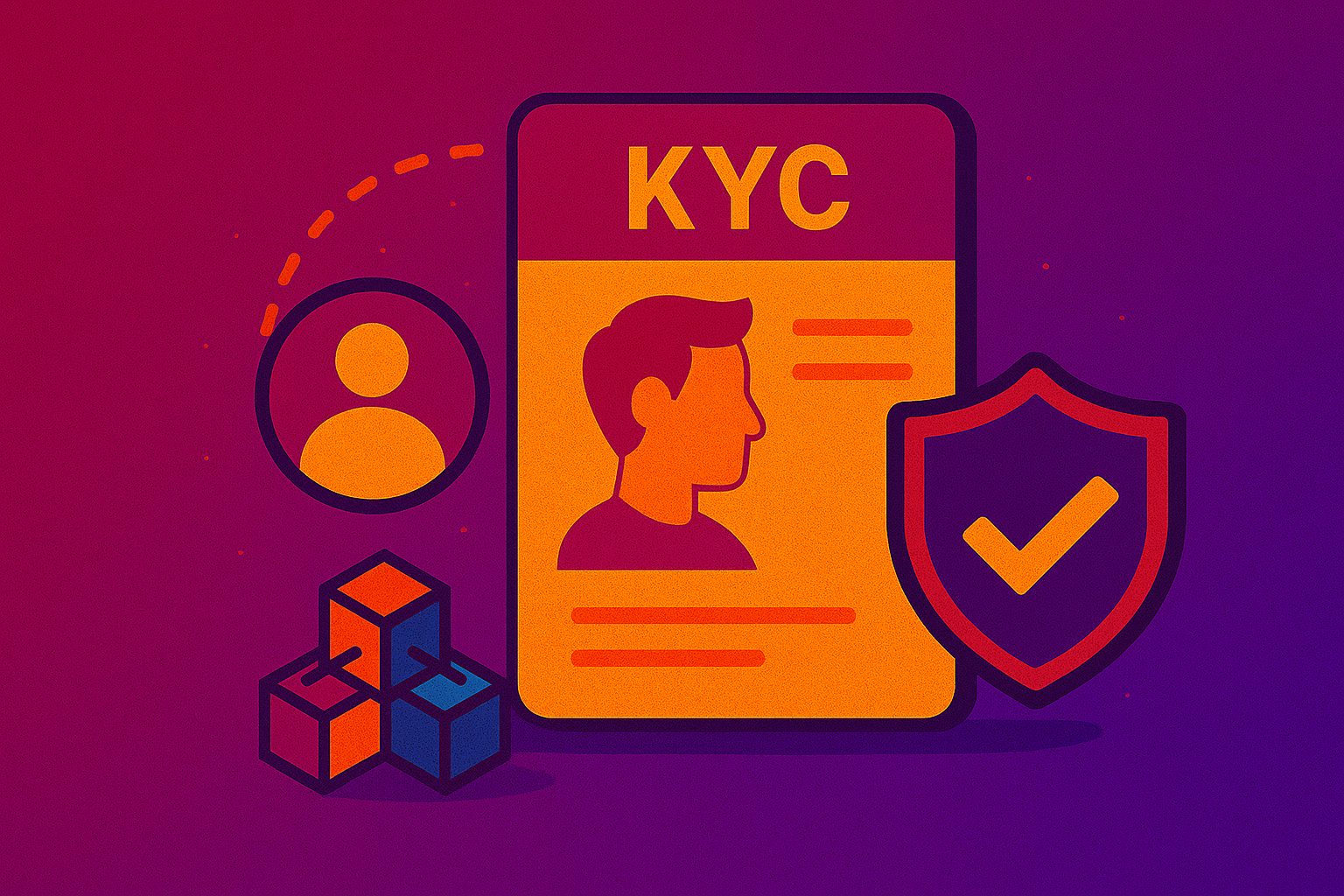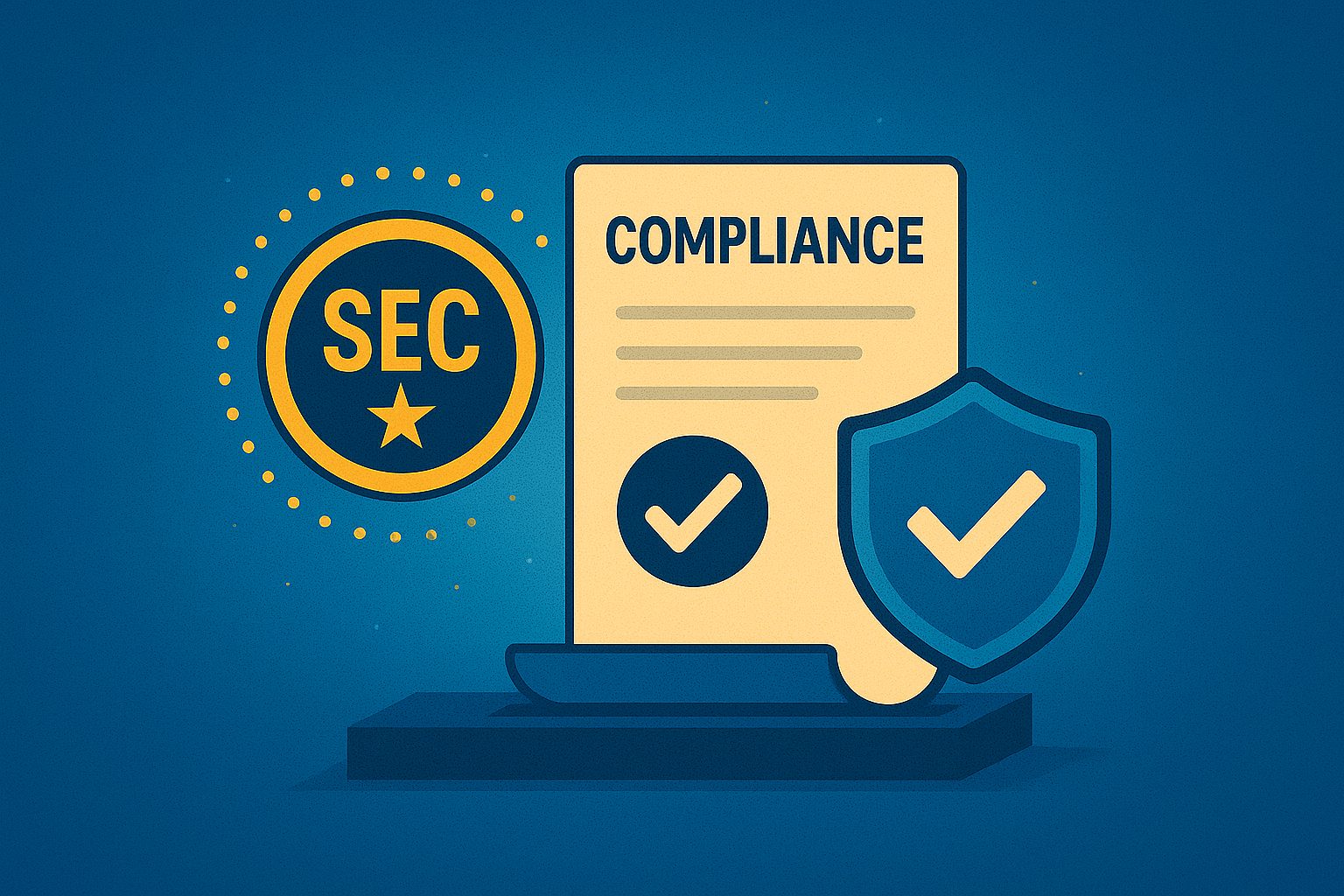Strategic Foundations for a Compliant Token Launch
Launching a successful token sale isn’t just about designing smart contracts or building hype—it’s about constructing a strategic legal foundation that allows your project to grow securely and sustainably. For any blockchain venture targeting U.S. or global investors, understanding the legal tools available under U.S. securities law is critical. Two of the most commonly used exemptions are Regulation D (Reg D) and Regulation S (Reg S). These frameworks have become the twin pillars supporting compliant token sales in an increasingly regulated environment. Used wisely, they can provide the flexibility to raise capital, reach international backers, and avoid the heavy burden of full SEC registration. Misused, however, they can expose your project to enforcement risk, investor disputes, and reputational damage. This article unpacks how Reg D and Reg S work, what they mean for your token sale strategy, and how to wield them as instruments of long-term success.
Demystifying Reg D: A Safe Harbor for U.S. Issuers
Regulation D, or Reg D, is a set of exemptions from SEC registration that allow companies to raise capital without the time and expense of a public offering. In the context of token sales, Reg D offers an attractive pathway for U.S.-based projects looking to sell tokens to accredited investors while remaining compliant with federal securities laws. Most projects rely on Rule 506(c), which permits general solicitation and advertising—as long as the issuer takes reasonable steps to verify that all purchasers are accredited investors. These are typically high-net-worth individuals or institutions that meet certain income or asset thresholds. By using Reg D, token issuers can tap into a substantial pool of capital while avoiding the rigors of full SEC registration, as long as they maintain strict investor eligibility requirements and file a Form D with the SEC within 15 days of the first sale. Reg D gives your project a firm legal foothold in the U.S. market—if you’re ready to play by the rules.
Reg S Explained: Going Global with Confidence
While Reg D focuses on U.S.-based fundraising, Regulation S (Reg S) opens the door to the rest of the world. Designed to exempt offers and sales of securities made outside the United States, Reg S allows token projects to reach international investors without triggering SEC registration—provided the offering is conducted in compliance with the laws of the country where the sale occurs. To qualify, the token sale must not be made to U.S. persons or involve any directed selling efforts in the U.S. This means no targeted advertising, no U.S. marketing campaigns, and no acceptance of U.S.-based contributions. Used correctly, Reg S empowers token issuers to diversify their investor base, tap into global markets, and build international credibility. It’s not a free pass to ignore securities law—local regulations still apply—but it can be a powerful component of a dual-exemption strategy that includes Reg D for U.S. investors and Reg S for everyone else.
The Power of Pairing: Why Reg D and Reg S Work Best Together
One of the most effective strategies for token sales targeting a global audience is to combine Reg D and Reg S. This hybrid approach allows projects to lawfully raise capital from both accredited U.S. investors and qualified international backers without registering their token as a security. Under this model, sales to U.S. investors are conducted under Reg D, while sales to non-U.S. investors fall under Reg S. By separating the offerings based on geography and eligibility, issuers can tailor marketing efforts, manage risk exposure, and remain compliant with securities laws across multiple jurisdictions. The key is to implement robust controls that prevent overlap—for example, using geo-blocking tools on your website, segmenting email lists by region, and maintaining clear documentation for each investor’s residency and accreditation status. When executed properly, the Reg D + Reg S combination can provide wide reach with minimized regulatory friction, making it one of the most popular token sale strategies in the market.
Marketing Under the Microscope: How to Promote Without Violating the Rules
Marketing is the lifeblood of any token sale, but under Reg D and Reg S, it comes with serious constraints. For Reg D offerings under Rule 506(c), public marketing is allowed, but only if the issuer verifies each investor’s accredited status through reliable means, such as reviewing tax returns, bank statements, or third-party certifications. This puts a heavy compliance burden on your onboarding process but also enables more visibility and outreach. Reg S, on the other hand, strictly prohibits any directed selling efforts in the U.S.—including online ads that might be seen by U.S. persons. This means you’ll need to localize campaigns, carefully monitor digital marketing footprints, and avoid U.S.-based influencers or media channels. Violating these boundaries can undermine the legitimacy of your exemptions and lead to SEC enforcement actions. Smart projects invest in marketing compliance as seriously as they do in creative execution, ensuring that every campaign builds momentum without crossing regulatory lines.
Token Lockups and Transfer Restrictions: What You Need to Know
One of the most overlooked aspects of Reg D and Reg S compliance is the post-sale lockup period. Tokens sold under Reg D are considered restricted securities, meaning they cannot be resold freely for at least one year unless a further exemption applies. During this time, tokens cannot be listed on exchanges or traded openly unless they’re moved in accordance with Rule 144 or through a registered broker-dealer. For Reg S, tokens are also subject to restrictions if they have the potential to flow back into the U.S. market. Most projects implement technical transfer controls within the smart contract—such as wallet whitelisting or time-locked releases—to enforce these limitations. These mechanisms not only help maintain compliance but also demonstrate to regulators that the project is taking a responsible, proactive approach. Issuers must communicate these restrictions clearly to investors from the outset, avoiding surprises and minimizing the risk of post-sale disputes.
Legal and Technical Infrastructure: Building for Compliance from Day One
A compliant token sale starts long before the first contribution. Projects planning to use Reg D and Reg S must design both legal and technical infrastructures that align with the rules. Legally, this means working with experienced securities attorneys to draft offering documents, terms of sale, and investor agreements that reflect the nuances of each exemption. Technically, it means designing smart contracts that can enforce geographic restrictions, investor eligibility, and transfer limitations. KYC/AML processes must be in place to verify identities, screen for sanctions, and maintain detailed records for audits or inquiries. Some projects also partner with compliance-as-a-service platforms that provide end-to-end regulatory tooling, allowing founders to focus on building rather than navigating legal landmines. The earlier you integrate these systems, the smoother your launch will be—and the more confident your investors will feel.
Pitfalls to Avoid: Common Reg D and Reg S Mistakes
Even well-intentioned projects can stumble when executing a Reg D or Reg S token sale. One common error is marketing too broadly—sending promotional emails or running online ads that inadvertently reach U.S. persons during a Reg S offering. Another pitfall is failing to verify investor accreditation for Reg D participants, relying instead on self-certification, which does not meet SEC standards under Rule 506(c). Some issuers also forget to file a timely Form D, a required step that puts the SEC on formal notice of your exemption. Post-sale, many projects overlook transfer restrictions or fail to build technical controls to enforce them, exposing themselves to secondary market violations. These missteps can trigger enforcement actions, investor complaints, and long-term reputational damage. Awareness, planning, and diligent execution are your best defenses against these common traps.
Token Design Matters: Structuring for Legal and Utility Harmony
The nature and function of your token play a critical role in how Reg D and Reg S apply. If your token offers governance rights, profit-sharing mechanisms, or appreciation potential, it’s likely to be classified as a security—making exemptions essential. But token design also influences utility and adoption, which can be hindered by regulatory restrictions. One solution is to separate functionality from fundraising: offer a security token during the sale and unlock utility features after compliance milestones are met. Some projects design dual-token models—one for fundraising and another for platform use. Others use gradual release schedules to time token availability with product readiness and regulatory clearance. The smartest issuers don’t treat compliance and design as competing forces. They use legal input to inspire better architecture, creating tokens that are both usable and legally sound.
Long-Term Vision: Reg D and Reg S as Launchpads for Growth
While Reg D and Reg S are often seen as tactical tools for launching a token sale, they also serve as strategic launchpads for long-term growth. By raising capital within a compliant framework, you gain credibility with institutional investors, increase the likelihood of exchange listings, and reduce the risk of future legal liabilities. Moreover, your disciplined approach positions you to explore broader funding channels—such as Regulation A+ or even a public offering—once your project matures. Compliance creates optionality. It opens doors, keeps your team focused on development instead of litigation, and lays the groundwork for global partnerships. In a fast-moving space where reputations are fragile and regulatory scrutiny is rising, a well-structured Reg D and Reg S strategy is a powerful signal to the world: this is a project worth believing in.
What Regulators Are Watching—and Why It Matters
Regulators are watching token sales more closely than ever before, and their focus extends beyond legal documents to how your project behaves in practice. The SEC has made clear that form-over-substance strategies—where projects use legalese to skirt real compliance—won’t hold up under scrutiny. They’re looking at investor communications, token functionality, exchange listings, and marketing content to determine if your offering aligns with the intent of securities laws. Reg D and Reg S give you a framework to work within, but it’s up to your team to honor both the letter and spirit of the law. Transparency, accountability, and responsiveness matter. Projects that treat regulators as adversaries may win short-term battles, but lose the long-term war for legitimacy and scale. Those that engage in good faith build bridges—to investors, partners, and future opportunities.
Charting Your Course with Clarity and Confidence
Token sales are no longer the regulatory Wild West they once were. Today, the most successful blockchain projects are those that chart their course with legal clarity and operational confidence. Reg D and Reg S aren’t just compliance checkboxes—they’re strategic tools that help you raise capital, build community, and establish a presence in both U.S. and international markets. By understanding their rules, embracing their constraints, and integrating them into every layer of your token strategy, you don’t just stay out of trouble—you stand out from the crowd.
When executed with precision and purpose, Reg D and Reg S don’t limit your vision—they amplify it. Use them wisely, and let your token sale be the beginning of something built to last.




